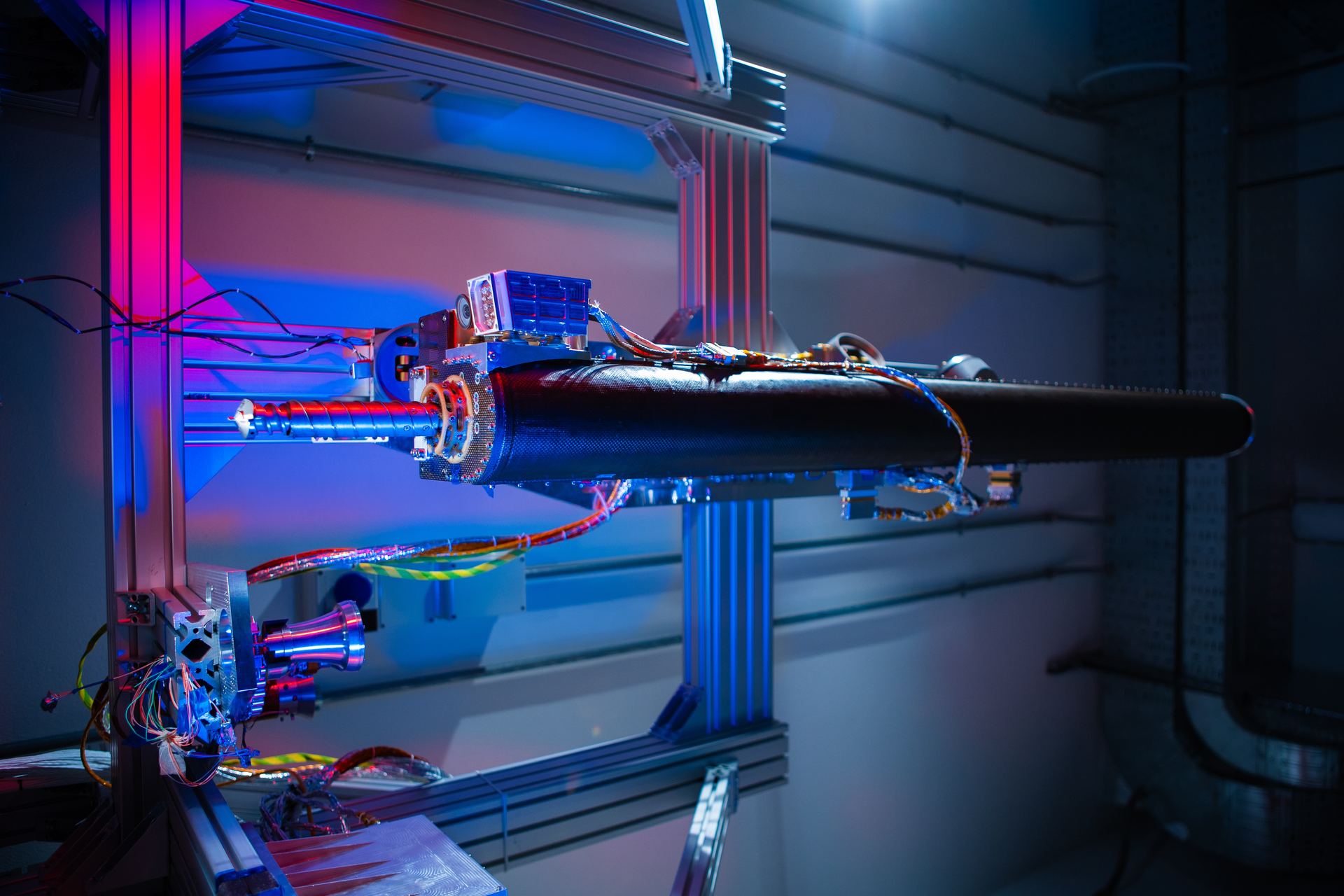31.08.2024

ESA's Prospect package, including drill and a miniaturised laboratory, will fly to the Moon’s South Polar region in search of volatiles, including water ice, as part of NASA’s Commercial Lunar Payload Services initiative.

NASA has selected Intuitive Machines for a flight opportunity in 2027 that will deepen our understanding of the Moon and answer key questions about where and how volatiles can be found on the lunar surface.
Volatiles, such as water ice, are chemical components that easily evaporate or vaporise under certain conditions.

Prospect is a suite of instruments that will drill up to at least one metre depth beneath the lunar surface, extract samples, and process them in a mini lab.
The combination of robotic drill and sample analysis package aims to identify volatiles trapped beneath the surface at extremely cold temperatures down to –150 °C.
Europe’s major contribution will share the ride on Intuitive Machines’ Nova-C lunar lander with five other instruments from the US, including retroreflectors to locate landing sites on the Moon and yeast to study radiation and gravity responses.
In total, the six instruments will have a mass of about 80 kg.
Prospect is part of a global effort to identify potential lunar resources for a sustainable, long-term human presence on the Moon.
Volatiles for sustainable exploration
Water is a key target: there may be concentrations of frozen water at or below the surface especially in the lunar polar regions – something suggested by recent measurements from orbit. Information on how much water is present and how accessible it is would help plan future missions using local resources.

“Prospect joins a new wave of lunar science and exploration that could open the door to the use of lunar resources. For example, extracting oxygen directly from lunar rocks and dust could be an efficient way to supply oxygen for human habitats or spacecraft propulsion,” says Richard Fisackerly, Prospect project manager.
“Besides their potential as resources, lunar volatiles would also represent an important component of the lunar regolith – the layer of loose dust and fragmented rock on the Moon's surface. Prospect can further our understanding of the fundamental science of the Moon and its environment,” he adds.
Drilling and sample analysis
The robotic drill, called ProSEED, will penetrate the lunar surface up to one metre depth. Temperatures at the subsurface are expected to be less than –100 °C and correspond with conditions where water ice may be stable. The drill features a multispectral imager and a permittivity sensor to support the remote detection and analysis of volatiles, as well as the mineralogy of the regolith at the landing site.

The miniaturised laboratory ProSPA will receive the samples from the drill via a carousel with multiple ovens, seal them, and heat them to extract the cold-trapped volatiles. The ProSPA instrument will then measure the nature and abundance of lunar volatiles using the gases released from the sample. ProSPA will also test specific processes which could be applied for resource extraction in the future.
One step closer to prospecting the Moon
The ProSEED drill has already undergone trials in Italy including tests conducted at very low temperatures, under low pressure, and using a mixture of lunar regolith simulant and water ice.

These tests have proved the drill capable to penetrate deep into hard material and successfully collect samples.
Prospect is developed for ESA by a broad industrial team with Leonardo in Italy as prime contractor and technical lead of the ProSEED drill, together with the Open University in the UK as lead of the ProSPA instrument.
“This achievement is an important confirmation of Leonardo’s technological excellence in space robotics, a result of the experience gained through developing of drills and sampling systems for the Rosetta and ExoMars missions,” says Francesco Rizzi, senior vice-president of Space Line of Business at Leonardo.

“After more than a decade of developing the ProSPA concept and instrument, our team is super-excited to be hitching a ride to the Moon. We look forward to analysing fresh samples which might contain ancient reserves of water and other ices. We can't wait to unravel the mysteries of this extreme environment, and discover its potential to support future exploration missions,” says Simeon Barber, ProSPA project lead at The Open University in the UK.
Prospect stands for Package for Resource Observation and In-Situ Prospecting for Exploration, Characterisation and Testing.
Quelle: ESA
